The Astonishing Chaparral 2J
The Can-Am series had seen nothing like it!
WORDS & IMAGES BY: KARL LUDVIGSEN
Begun as a project at Chevrolet and inherited by Jim Hall, a sports-racing car with phenomenal potential became the Chaparral 2J. The car was framed and intended to encourage innovation, and the Can-Am series had seen nothing like it.
At Watkins Glen they said, “It looks like the box it came in.” Even that harsh judgement of the new Chaparral 2J’s appearance may have been too generous. However, handsome is as handsome does, and in its astonishing way the 2J did handsomely.
The 2J’s basic concept was simple enough. If a vacuum could be maintained underneath a moving automobile, it would hold the car down with greater force. With the latest racing tires, more force would mean more grip, translating into vastly increased cornering power. The idea was not new. Germany’s Vasa Nićin in Dresden applied for a patent on it on December 29, 1925.
The wider and larger the tires, the bigger the contact patch on the pavement and the more work they will do before sliding as the downforce is increased. Faster cornering is the key to success on road-racing tracks. This would later be exploited in so-called “ground effect” racing cars, but these were a decade in the future, and the basis of the 2J was created in the winter of 1968.
This concept was available long before the FIA implemented a height reduction on aerodynamic wings that sent all Can-Am and other competitors scrambling for some new “unfair advantage.” During 1968 engineers in Chevrolet’s R&D department seized on suction downforce as a radical breakthrough that could revitalize their activities under new chief Charlie Simmons.
With Jim Hall building his Chaparral 2H on his own for the 1969 season, they needed something new that might help the Texan in the future. After tests with mockups and mule vehicles showed promise, said R&D engineer Paul Van Valkenburgh, “Simmons gave Don Gates all the draftsmen, technicians, and budget he needed to have it ready for the next racing season.”
Gates, the brainy engineer who had won Simmons’s approval, concentrated on the suction system of Chevy’s “Suspension Test Vehicle,” or STV. Don Cox, Joe Marasco, and Ernie DeFusco designed the car that would carry it. The challenge they faced in creating a suitable body forced them to ignore conventional aerodynamic ideas. Their dominant need was for a robust box that would not collapse under the vacuum generated inside it.
The STV’s fundamental monocoque structure was very deep through its center because that portion, initially unpainted, was a major load-bearing section. Hatches in its sides met the rules requiring doors. Longerons extending rearward from the monocoque embraced the Chaparral-prepared Chevrolet V-8, an aluminum engine of 7.6 liters and 680 horsepower driving through a Chevy-built transmission combining a torque converter with three gears forward that were shifted without a clutch.
Containing the areas where suction was generated was a box-like structure made of quarter-inch aluminum honeycomb. With no available technology to give it curvature, the result was a laughably slab-sided appearance. Dzus fasteners joined the major panels together and allowed quick access. In all, said Van Valkenburgh, “it was probably the strongest, stiffest race-car chassis that had ever been built.”
The STV’s suspension was conventional. At the front it had tubular wishbones and coil/damper assemblies like those of the Chaparral 2H and racing-style linkages like those of the 2E/G at the rear. Their geometries countered nose-dive on braking and tail squat on acceleration, both of these being activities that would upset the skirt system more than would be convenient.
An important feature of the STV’s springing was that it was trimmed for ideal geometry at 1.5 inches below the car’s stance with its downforce not running. That was the amount that the car was calculated to be pulled down by suction to its operating height. From that datum line the springing allowed three inches of travel in both jounce and rebound. To take advantage of its downforce the STV wore the widest wheel rims it could accept and the widest of Firestone’s racing tires. Disc brakes were internally vented for cooling.
As the 1969 Can-Am season progressed the faults of Hall’s Chaparral 2H were found to be many and insoluble. This was not surprising to Chevrolet, which knew that Hall’s personally chosen approach, a car built for maximum speed with little attention to downforce, would not work on the Can-Am circuits.
Meanwhile tests of the STV were attracting attention at Chevrolet R&D. “The first time the auxiliary-motor fan-drive system was fired up,” recalled Van Valkenburgh, “it literally smoked out the engineering lab. It became rather embarrassing to have around…so ridiculously sensational that everyone was talking about it.” In the spring of 1969 Hall asked Don Gates to join his effort to sort out the 2H. Chevrolet decided that as the STV was Gates’s baby, the semi-finished vehicle might as well accompany him to Midland. It was shipped there in September.
As originally built by Chevrolet and made whole to run at Rattlesnake the STV’s rear wheels were exposed, in conventional fashion. Suction was applied over an area that was the width of the car and the length of the body between its wheel arches. Suction fans were mounted low at the sides of the body, flanking the engine and individually driven by small two-stroke motors.
In tests beginning in November 1969 this arrangement did give substantial downforce but the car’s handling was treacherous. “Regardless of how much basic understeer was incorporated with the fans off,” said Van Valkenburgh, “when they were turned on the car oversteered uncontrollably. Apparently the center of downward pressure was too far forward. But in spite of all the problems, with the fans working it was as fast as any other car ever run at Midland.”
While Jim Hall was increasingly cool to “someone else’s Can-Am car” the STV found a defender at Midland in Tom Dutton, an engineer-driver who had joined the team during 1969. “Practically everyone else viewed the project with either distrust or malice,” recalled Van Valkenburgh. Dutton was the driver for tests that proved to the sanctioning Sports Car Club of America that the car would not be wildly uncontrollable if or when downforce were lost. The SCCA also judged it acceptable in spite of FIA rules prohibiting “movable aerodynamic devices.”
To address the handling problem Gates reconceived the rear of the STV. Mocking it up with plywood, he rebuilt the rear of the body to enclose the wheels, nearly doubling the area of suction downforce. In tests of this version at Rattlesnake, said Van Valkenburgh, “Dutton was able to circle the skid pad at a fantastic lateral 1.7 g! This was a major jump from the previous best of 1.3 g. Dutton went out on the road course and knocked nearly two seconds off Hall’s previous best time.”
This won respect at Midland, where the STV had been given such a skeptical reception. Now accepted as a potential Chaparral, it was given the 2J designation, 2I being skipped. It needed substantial rebuilding and testing before it could become a racing car, time-consuming effort that lost its priority to Hall’s agreement to take over Chevrolet’s Trans-Am Camaro program. Its demands meant that the 2J missed the first two Can-Ams but was ready—just—for the third one at Watkins Glen on July 12.
Preparation included extending the aluminum honeycomb box to shroud the rear wheels entirely and complete enclosure of the rear of the car. Suction fans were now mounted at the extreme rear and driven by a single central auxiliary engine. “An alternate plan to use a variable-ratio snowmobile belt drive off the transmission was set aside as too complex,” Van Valkenburgh related, “but as it turned out that might have proved more dependable.” As well the new arrangement placed some 200 pounds of fans and engine high in the air, cantilevered out over the tail—not ideal for the center of gravity.
Suction was generated by radiator-cooling fans from an M-109 self-propelled howitzer. They had 17-inch blades, aluminum castings made by the Pesco Products Division of Borg-Warner, whose catalogue said that each fan could pump 9,650 cubic feet of air per minute when spun at 6,000 rpm, while maintaining a static pressure of 11 inches of water or 0.027 bar.
Driving two of these fans, through cogged rubber belts and magnesium sprockets, was the best engine Chaparral could find for the job: a German-made JLO two-stroke air-cooled twin imported by Rockwell, giving a rated 45 hp at 5,500 rpm. This engine was judged reliable after engine man Gary Knutson fitted a capacitor-discharge ignition system to overcome problems caused by dirt getting into the points of its conventional coil ignition. Problems with blade erosion from roadway debris were tackled by fitting each fan blade with a steel leading-edge guard.
The fans were evidently operating at slight under-drive, relative to engine speed (about 5,000 rpm) because their gross horsepower requirement at 6,000 rpm was 52 hp—more than the JLO could deliver. That was still enough to maintain a vacuum of 0.020 bar under the skirts when the car was at rest or moving slowly. The advantage of having an auxiliary engine was, of course, that downforce was present at all times, especially at low speeds where the extra downforce is most effective—and where wings don’t work at all.
Crucial to the creation and maintenance of downforce was a system of skirts that surrounded the suction area and remained as close to the ground as possible. The closer they conformed to the road the more effective the suction from the fans would be. But in being close to the road they inevitably made contact at times. To permit this without having the skirts bent or broken, they were made of General Electric’s tough Lexan plastic.
Side skirts were simple 2.3 mm sheets suspended from lever arms that adjusted their height in response to suspension movement through push-pull Bowden cables. The side skirts went up and down with the wheels and the rear skirt followed them, linked as it was to the side skirts at its ends.
The front skirt presented the greatest problem. Running across the car just behind its front wheels, it was crucial to the system’s success. While the fans worked hard to pull air out of the suction chamber, the car’s forward motion tried to ram air into that chamber. To minimize the extent of the pressure with which this forward skirt had to cope, the 2J’s body was shaped to scoop as much air up and over its top as possible. Transverse rubber strips under the car’s nose further interrupted the air flow.
The front skirt had to rub hard against the ground while the 2J was moving. It did this, at acceptable wear rates, because it was composed of a row of twelve thick Lexan plaques. These trailed sharply back from the underbody. Each had its own plastic hinge, backed by two others similarly hinged in a way that used combined spring and vacuum pressure to keep the trailing edge down against the pavement.
The front skirt’s segmented construction allowed it to adjust to road contours. The individual plaques had enough length to accept some wear. A new set was fitted for each race or as required, depending on the measured wear rate. They successfully survived 200 miles of testing at Hall’s Rattlesnake Raceway, showing that they could cope with a race duration.
Based on the suction system’s parameters an estimate would be that it could hold a 0.020 bar vacuum through the speed range up to 80 mph at which it was designed to perform best. Applied over the approximately 7,400 square inches of skirted chamber, this generated 2,220 pounds of downforce. That was more than the gross weight of the car with its 320 liters of fuel (57 liters of which were kept in a separate tank, mixed with oil, for the JLO engine) and a driver in the cockpit. So Jim Hall could have unveiled his 2J with it hanging upside down from the ceiling, the JLO shrieking away.
With its original abbreviated vacuum chamber the 2J had enough downforce to comer at a lateral 1.8 g. Best figures for winged Can-Am cars were in the range of 1.5 g. Hall said that with the extended chamber up to 2.0 cornering g should be attainable. A major difficulty was simply finding a driver who could exploit the extra half-g. Jim did not feel that he was up to it: “I’m driving like I always did but I just don’t seem to be going fast.
“When we introduced the 2J we thought who we’d like to do it,” Hall continued, “and we thought of Jackie Stewart.” It helped that both Hall and Stewart were represented by the same talent-management company at the time. “He agreed to drive it on a one-shot basis at a very reasonable price because he wanted to look at the car and see what it was.”
Special test days arranged at Watkins Glen were wasted because Stewart discovered all too early that stones sucked up from the recently resurfaced track lodged in the fan sprockets and flipped off the drive belts. A protective guard was made to shield the belts while other problems were diagnosed: overheating of the huge rear brakes and persistent vapor-locking of the JLO’s Tillotson carburetors. Bathed in engine heat from below and trapped under Lexan above, the JLO was complaining—although like the skirt it had kept going through the 200-mile test at Midland.
The early tests helped Stewart meet one of the challenges of the 2J: its left-foot braking, an important advantage of the car’s semi-automatic transmission. “This called for a new sensitivity in getting things coordinated,” said the Scot, “almost relearning how to drive.”
Asked about his new car’s attributes, Jim Hall answered, “With my former car, the 2G, we could get wheel spin and make it violently oversteer by over-controlling the throttle at almost any speed and at almost any place on the race course. But not the 2J. We can go full throttle without wheel spin or uncontrollable oversteer, at a much lower speed, and accelerate out of the corners at a much higher speed than ever before.”
Stewart qualified third fastest at Watkins Glen and was chasing the leading McLarens in the same position when various maladies forced the Chaparral’s retirement. Subpar power from the JLO reduced downforce which, with deterioration of the track, caused unexpected tire wear. Then brakes started acting strange and the JLO vapor-locked itself into silence. Finally, Stewart missed one of the tricky shifts with the “automatic” box, scrambling its internals, and the day was done.
“I was impressed with Stewart,” Hall recalled. “Jackie was fantastic. I was just astounded at his ability. We didn’t have enough brakes, we had some other problems with the fans and skirts but he didn’t complain about it. He soldiered on and did a hell of a job for us. He drove the bottom off that car.”
Jackie was impressed as well, finding the 2J “extraordinary, almost unbelievable. The car has remarkably good adhesion and it’s certainly very easy to drive. Notwithstanding the difficulties we’ve had with the fans pulling in dirt and fouling the belt drives, the car’s traction, its ability to brake and go deeply into the corners, is something I’ve never experienced before in a car this size or bulk.”
Before the race was over the white trucks were headed back to Texas with the asphalt-splattered 2J. “Hall was disgusted,” Paul Van Valkenburgh related. “He refused to put more of his own money into the project and because of its poor showing at the Glen sponsorship was unlikely. The 2J was disassembled and put into crates to be sent to the warehouse.”
But the makers of Lexan had been present at Watkins Glen to observe this car that used so much of their wonder material so effectively. In fact the car carried small GE decals. When prompted by Don Gates, General Electric came to the party. GE put up sponsorship “in the low five figures” to fund three more race appearances. Their support not extending to Jackie Stewart’s fee, Hall installed Vic Elford, a driver of his Trans-Am Camaros, in the 2J. One of history’s most versatile drivers, “Quick Vic” quickly got the hang of this newfangled racing car.
Skipping races at Mid-Ohio, Edmonton, and Elkhart Lake, the 2J next appeared at Road Atlanta for the 189-mile Can-Am race on September 13, 1970. This gave the Midland team a break to reassemble the “sucker car”—as it became known—and make some improvements. To help its JLO fight vapor-locking Gary Knutson converted it to fuel injection. Drive belts to the fans were moved out of the car’s interior to an external position, shrouded by what its creators called a “Martian bra”.
In early practice at the hilly Georgia track the 2J was an astonishing 3 seconds per lap faster than the all-conquering McLarens using similar Chevrolet V-8 engines. In spite of their best efforts Elford retained pole position by a 1.2-second margin. But in the first lap a fatigued ignition wire caused the JLO to start missing. A lengthy pit stop to diagnose and fix the problem kept Elford from finishing better than sixth place, six laps in arrears. However, at least the 2J had finished a race.
The next Can-Am was missed to concentrate on the two popular Californian events that concluded the championship. At Laguna Seca for the October 18 race the 2J and Elford were in dominant form, breaking the one-minute mark while qualifying 1.8 seconds ahead of both McLarens. All was set for a dominant display when the 2J’s Chevrolet engine broke a connecting rod during the warm-up session on race-day morning.
Regrouping for the race at Riverside near Los Angeles on November 1, Jim Hall’s outfit had its 2J ready. On this longer circuit the margin of superiority in qualifying was the largest yet, 2.2 seconds over the fastest McLaren. An easy runaway was obviously on the cards. But soon after the start the JLO twin decided to break its crankshaft. With various pit stops the 2J struggled on, retiring after only five laps.
In spite of these profound disappointments GE’s modest investment paid off, said the company. So sensational was the Chaparral 2J that more that two hundred million press “impressions” were totted up by the unique racing car. There would be no more because the SCCA, convinced that a developed 2J would wipe the field in 1971, finally implemented the FIA’s prohibition of “movable aerodynamic devices.” The 2J had plenty of these—the blades of its twin fans and the suspension-linked rear skirts. It entered legislatively enforced retirement.
A bizarre postscript to the 2J story was Gordon Murray’s use of fan-generated downforce for his Brabham BT46B of the 1978 Grand Prix season. After winning one race it was swiftly banned on the same basis as the Chaparral. By then modern underbody downforce was widely used after its efficacy was convincingly demonstrated by the Lotus 78 and Mario Andretti in 1977. Fathered by both Chevrolet and Chaparral, the 2J had been dramatically ahead of its time.
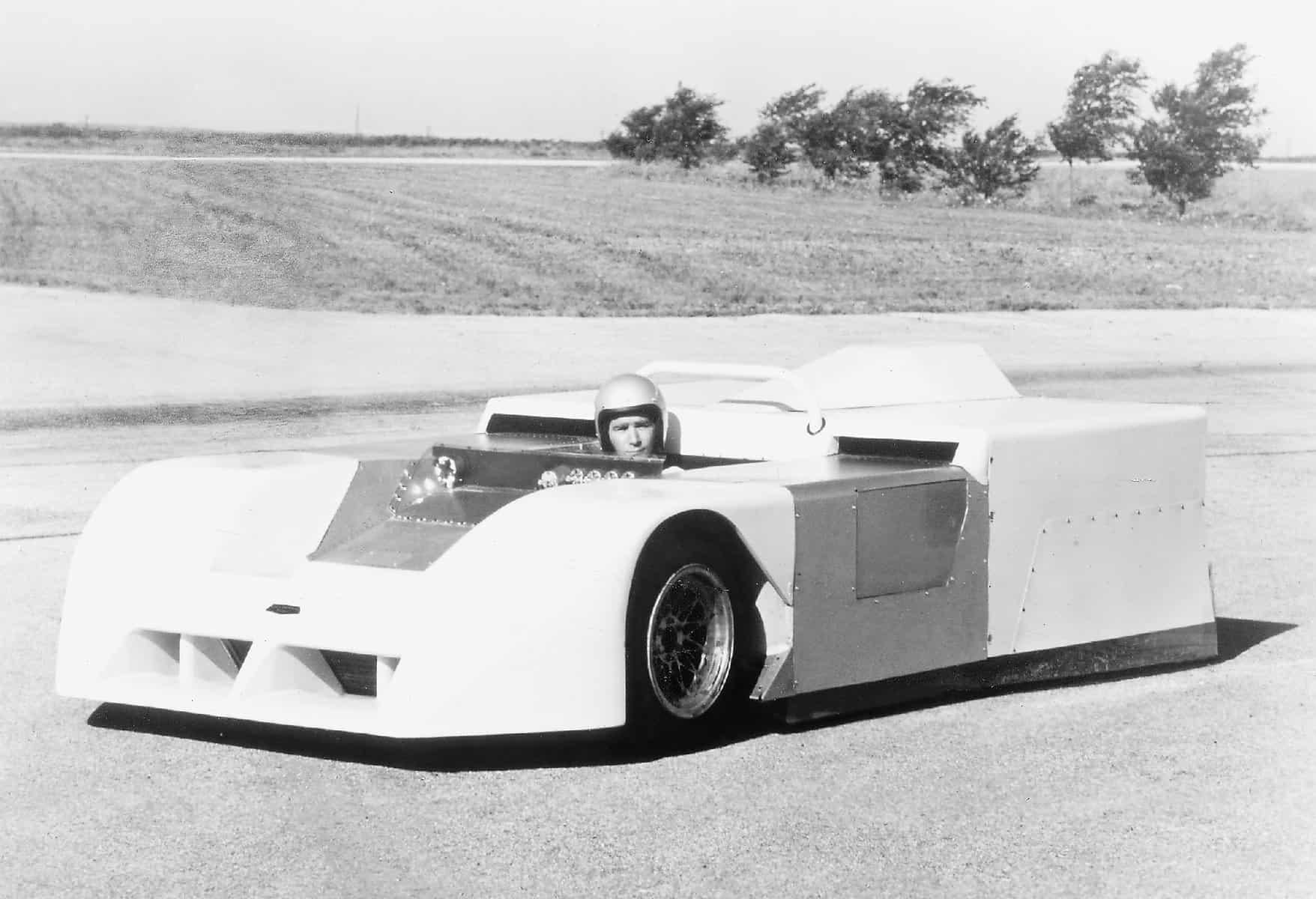
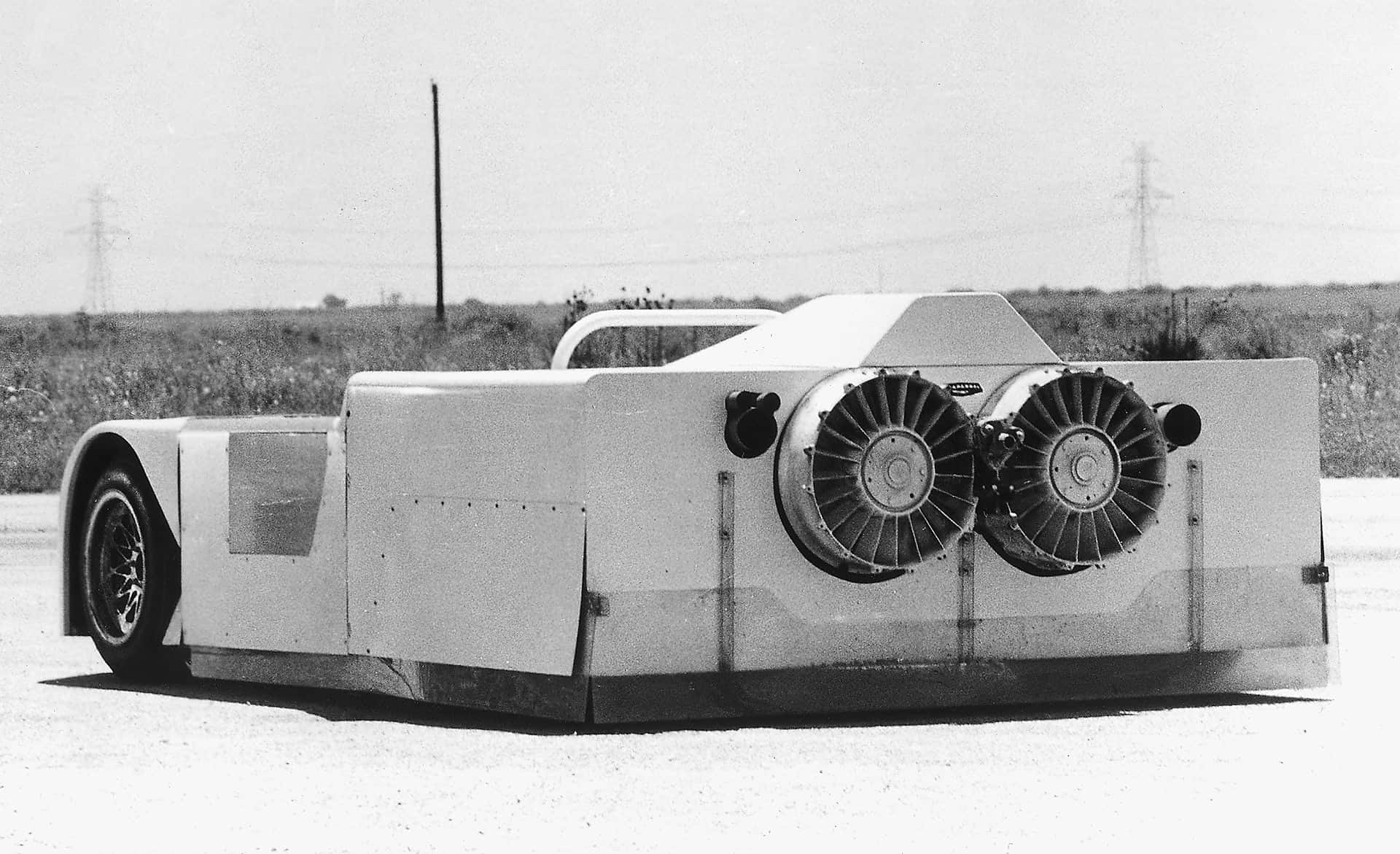

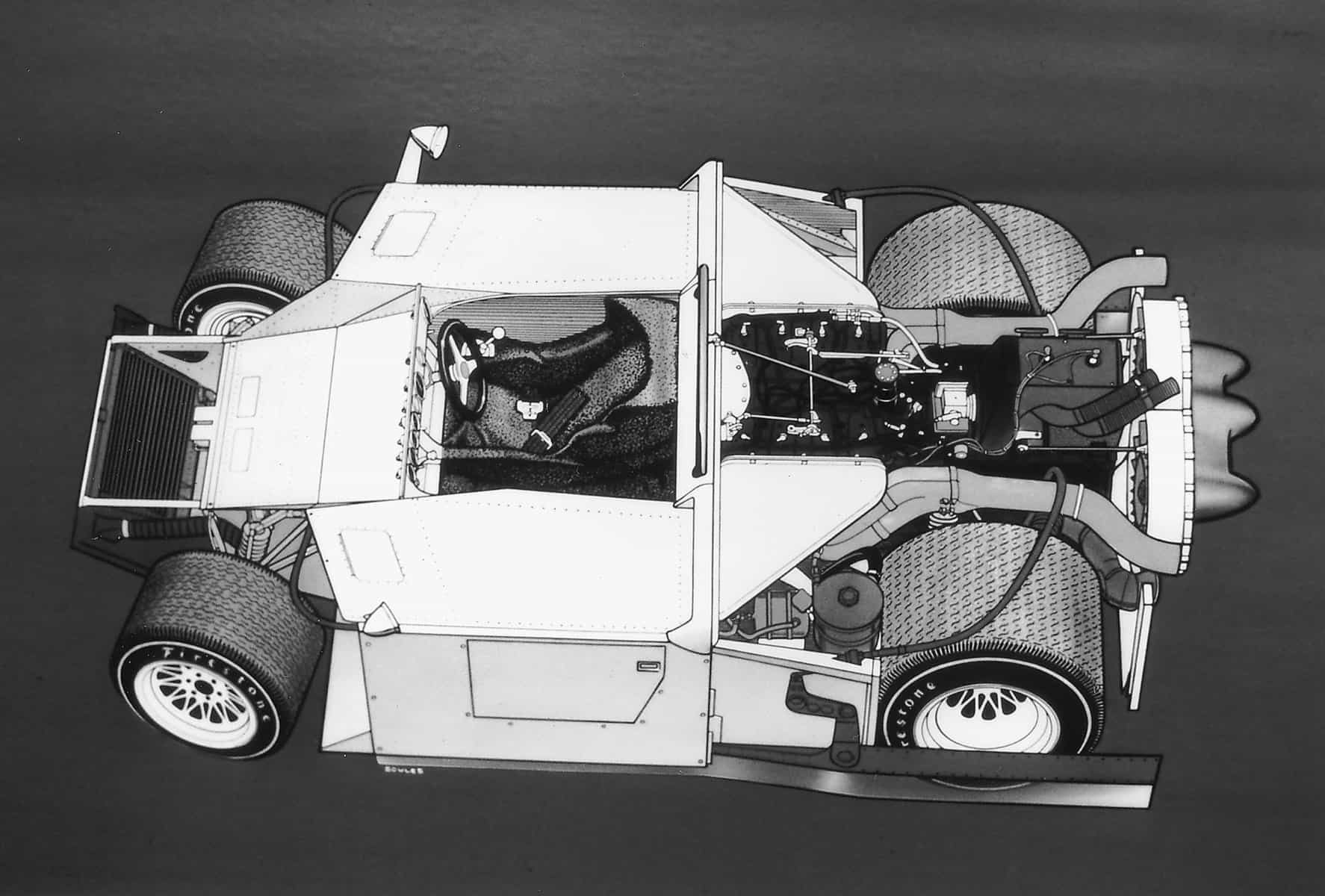
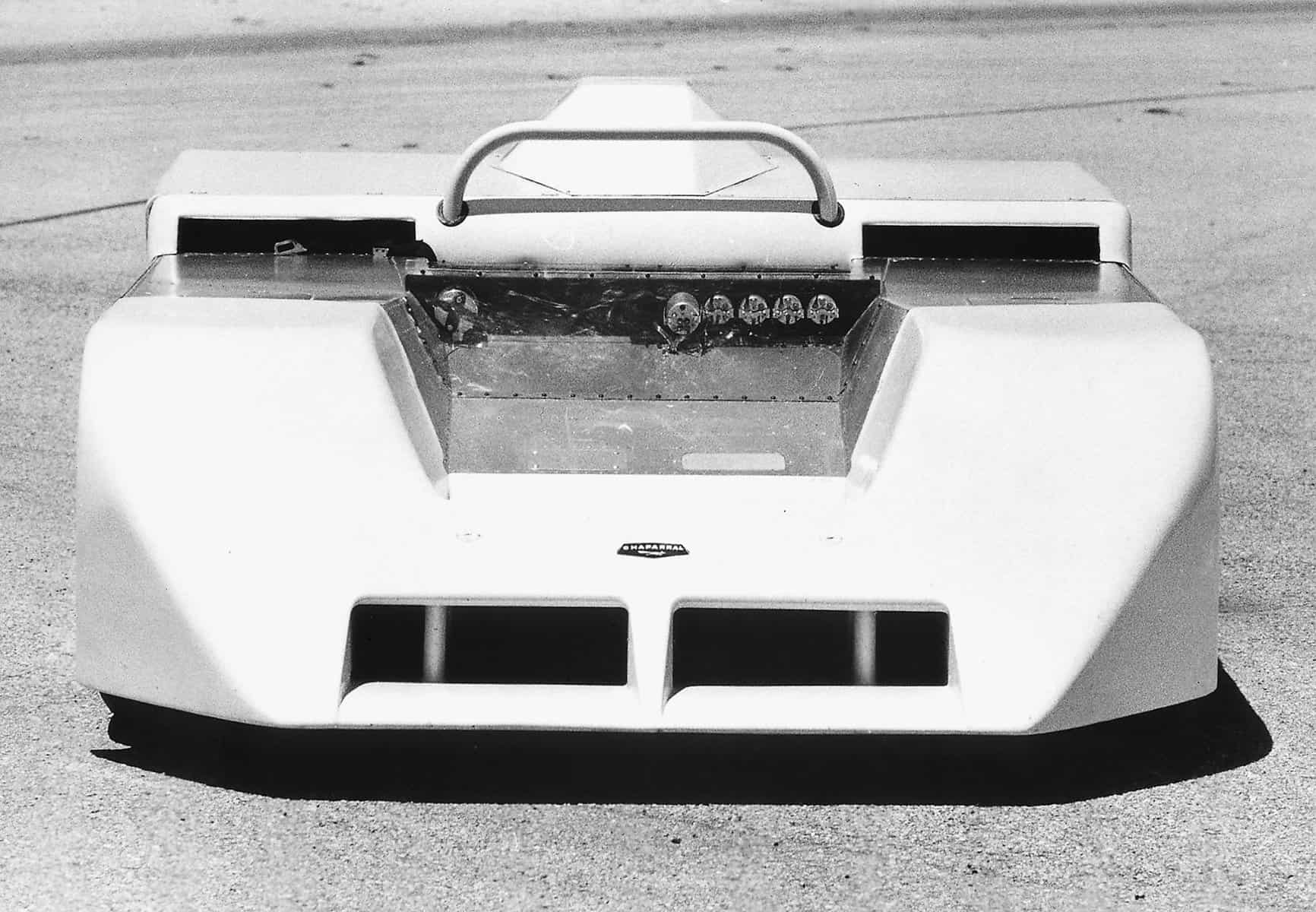
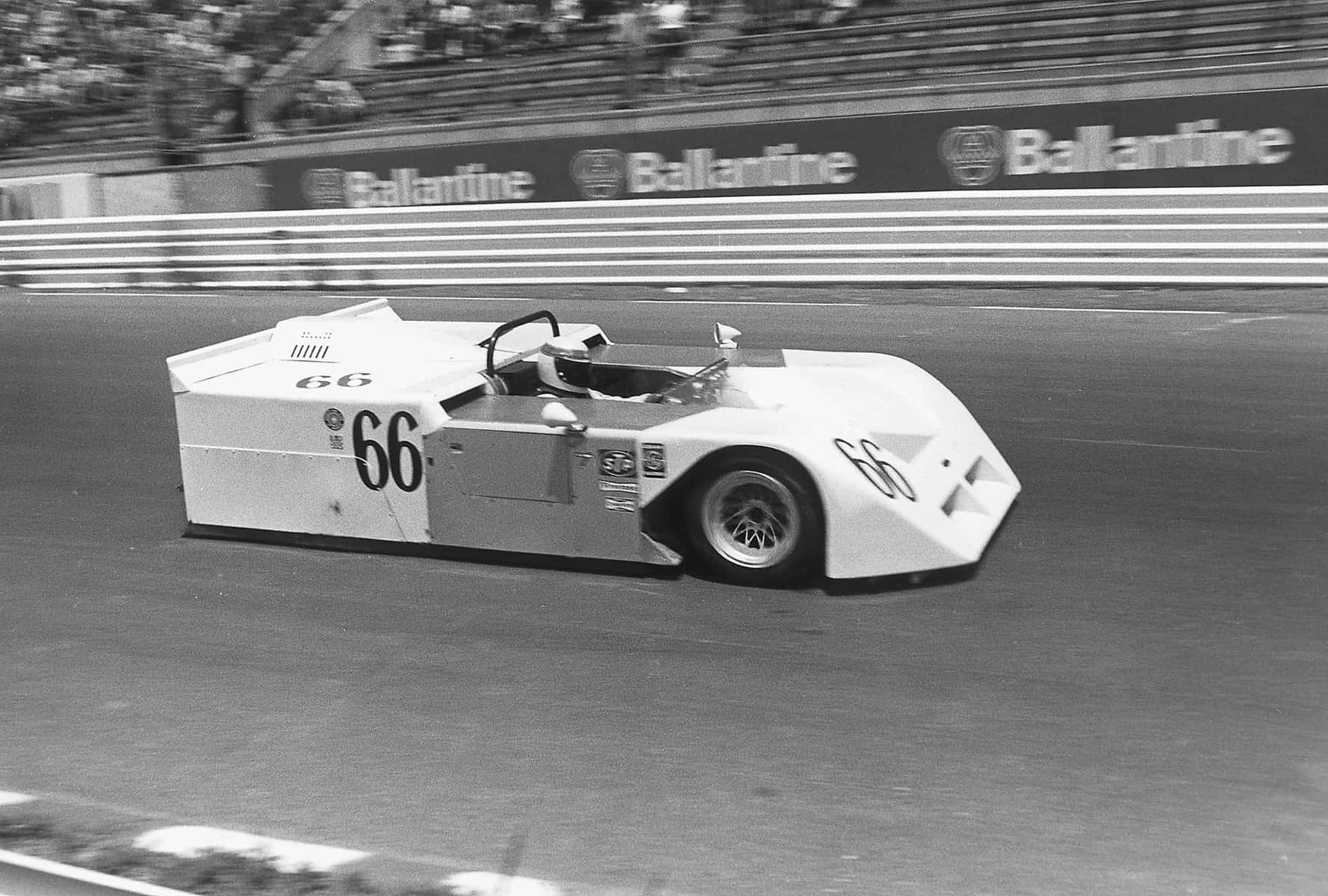
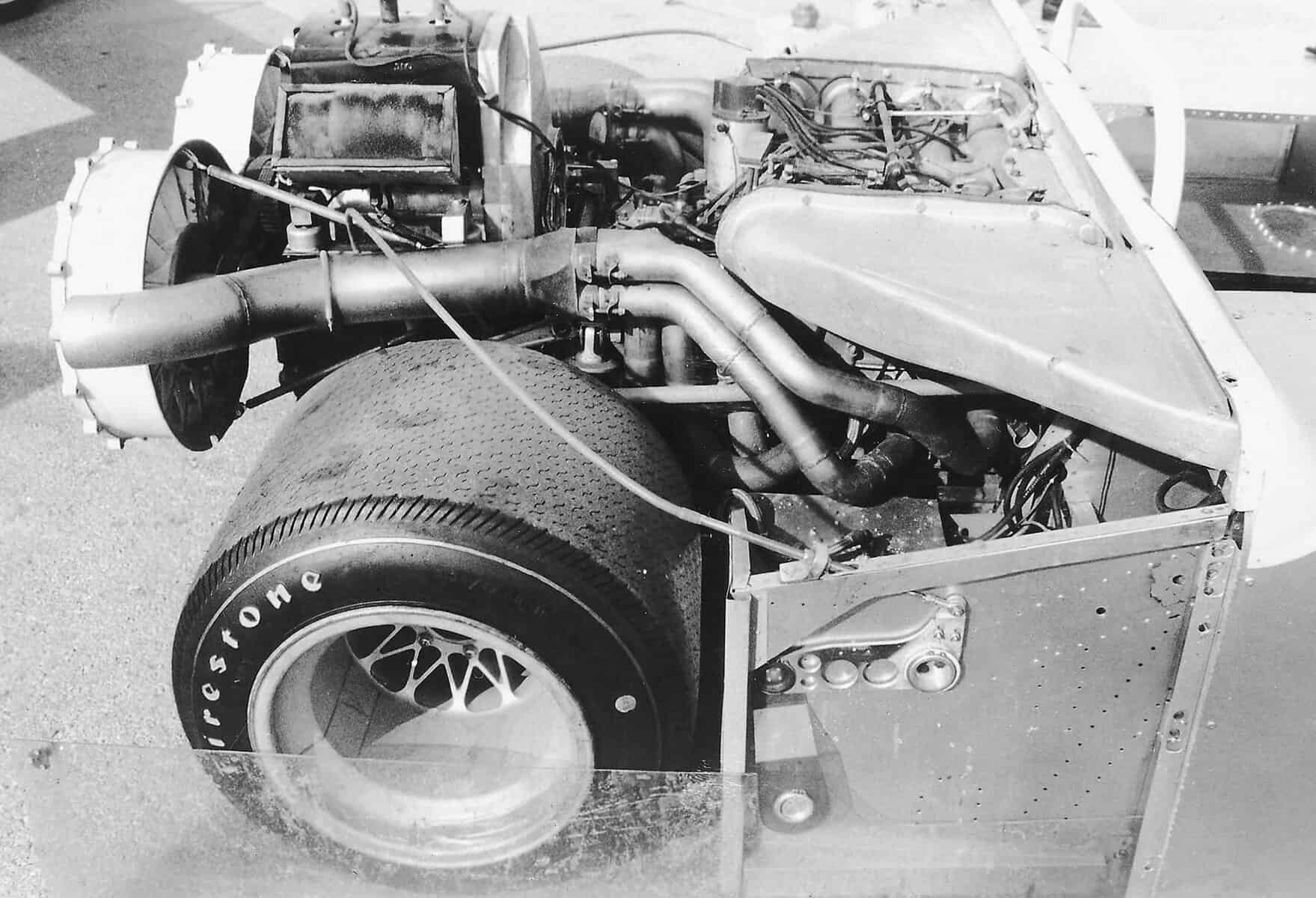
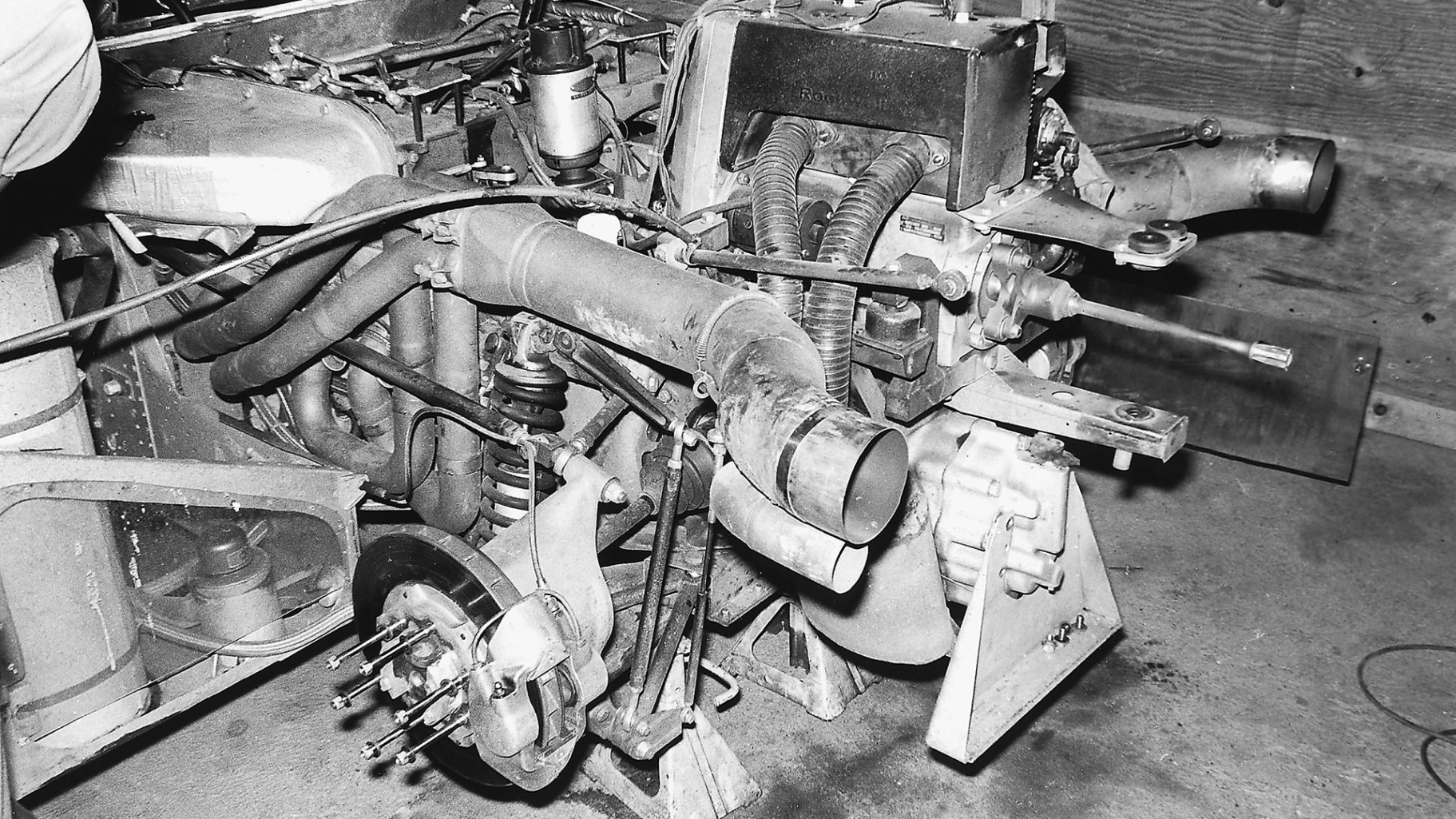


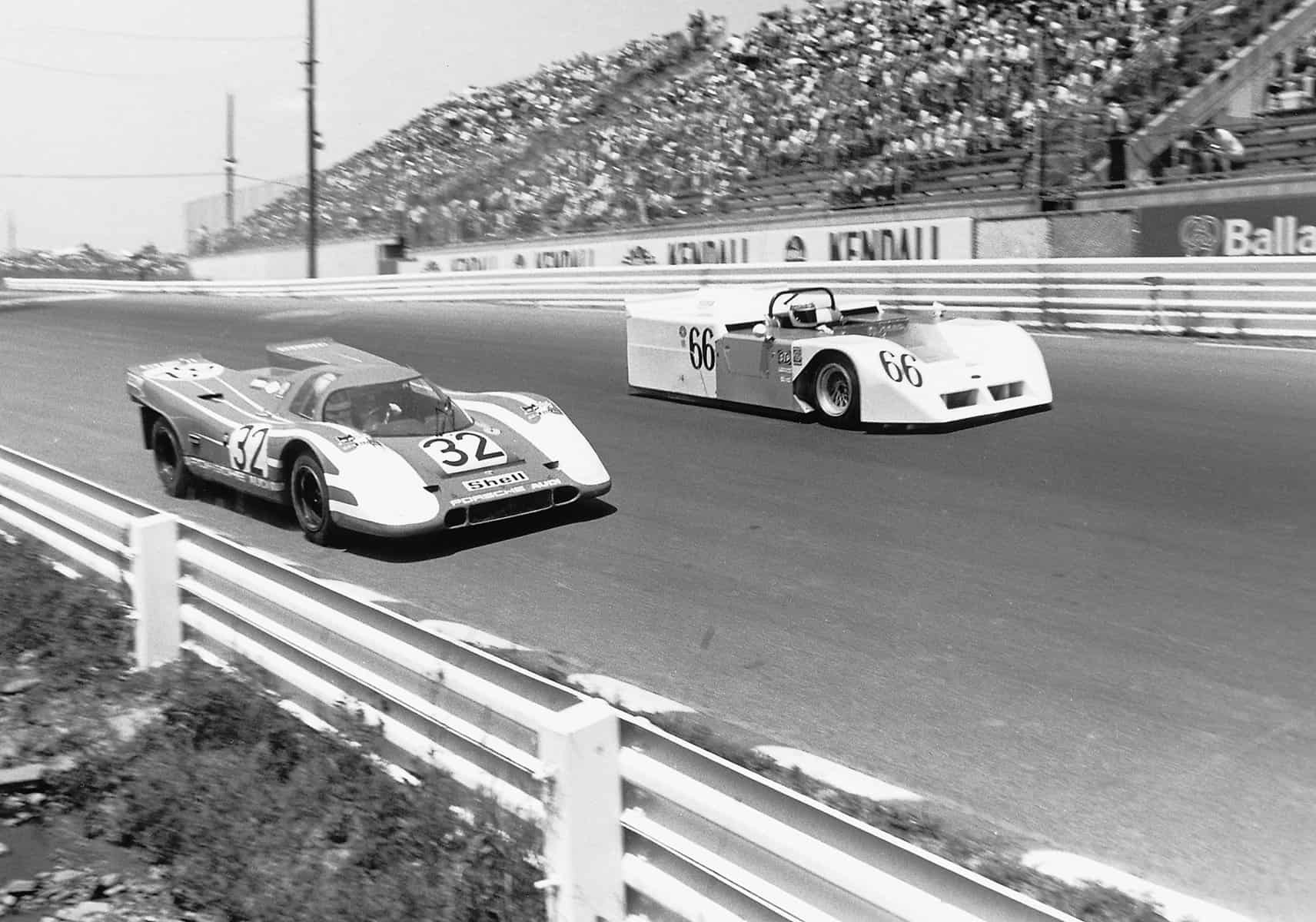
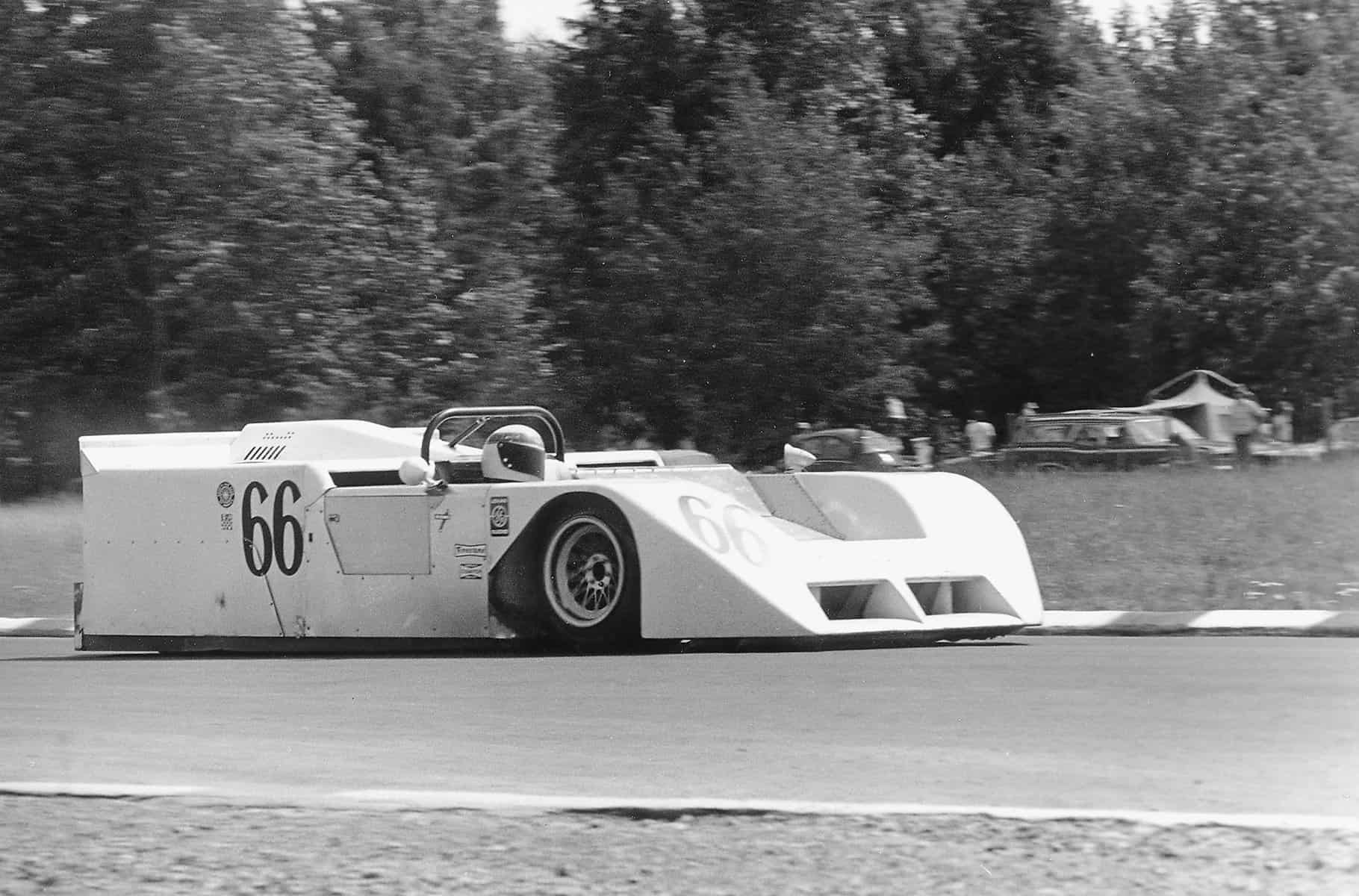
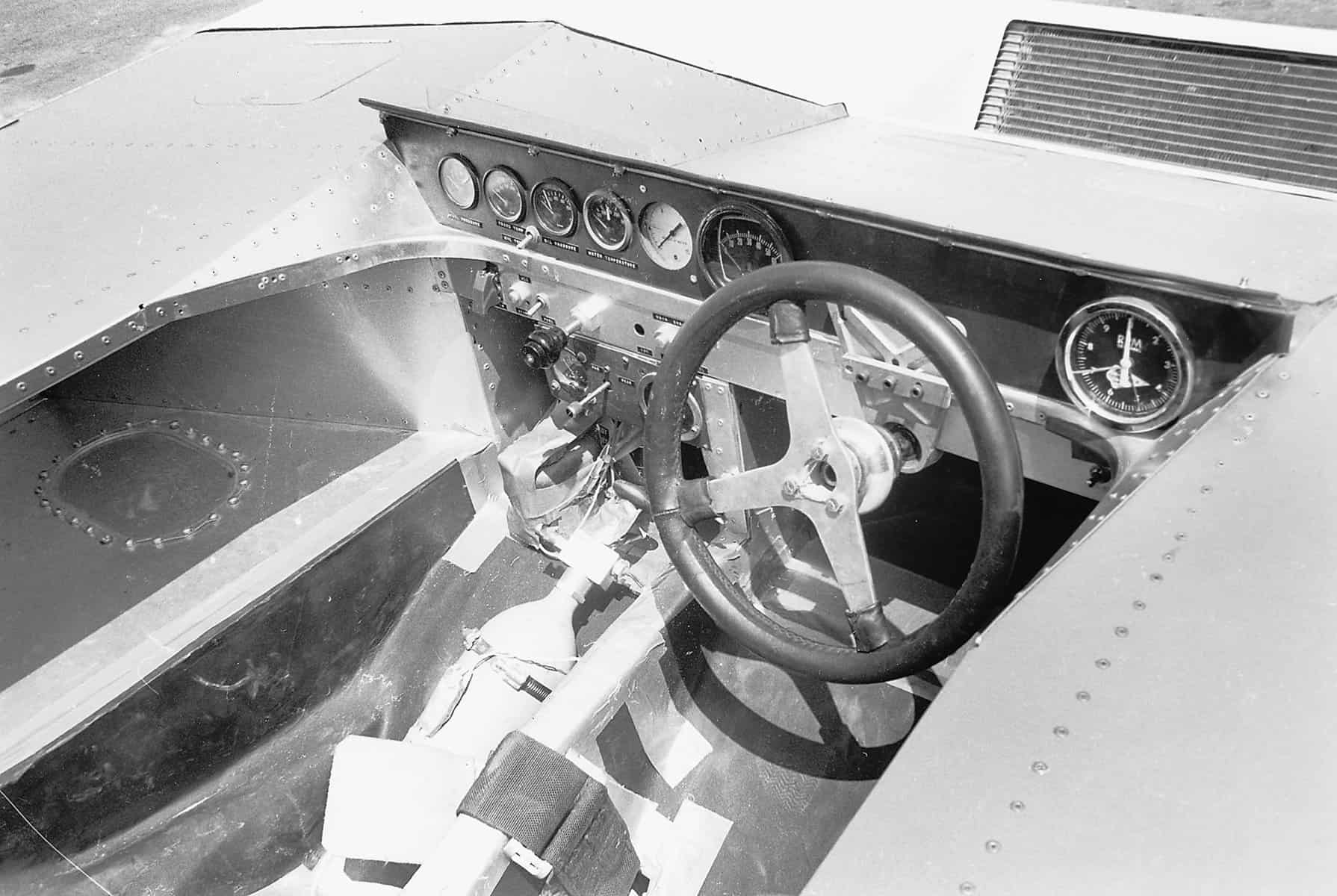
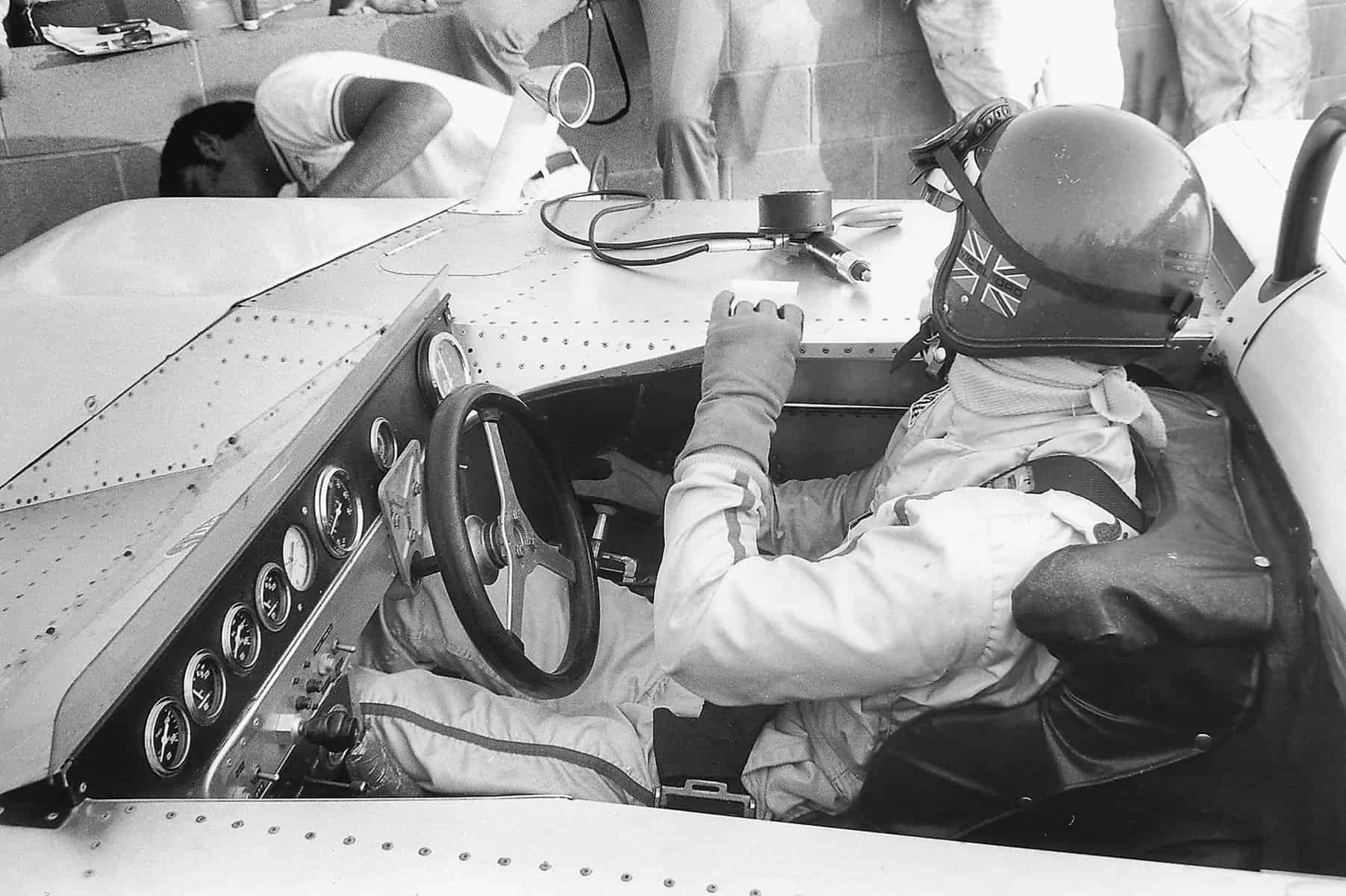
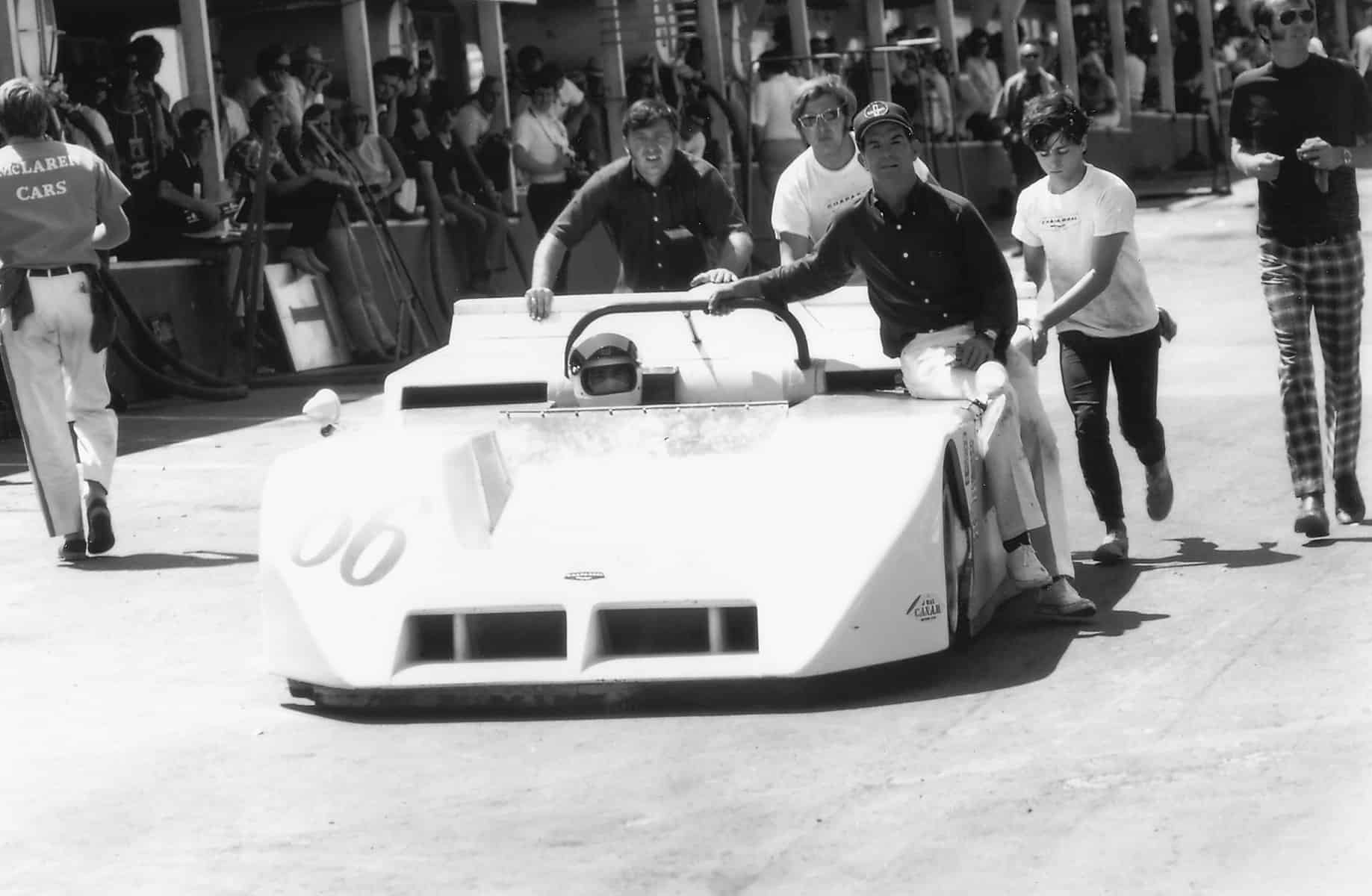
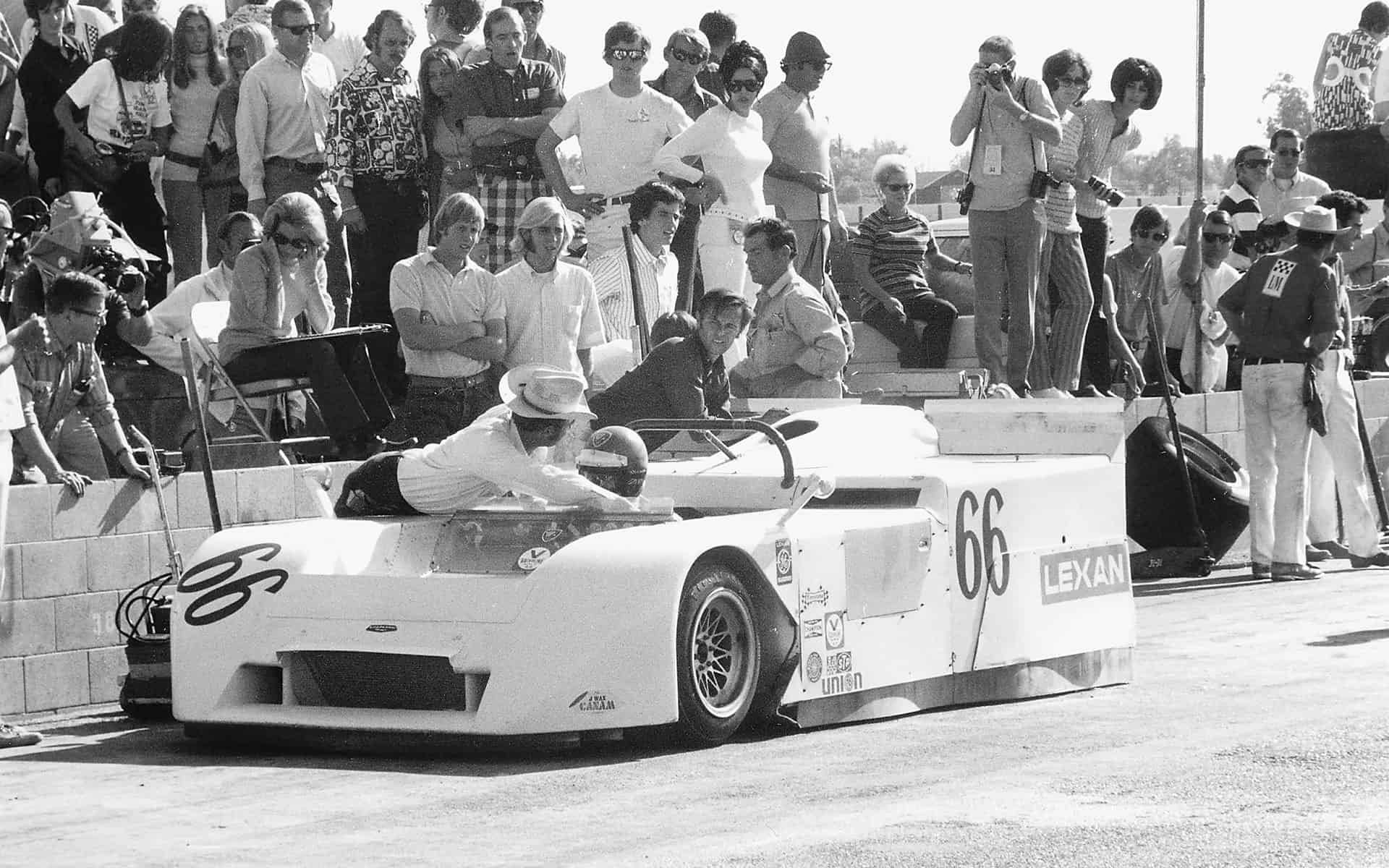


![alfa gtz perfectly imperfect webannerl[1]](https://automedia.revsinstitute.org/wp-content/uploads/2024/08/Alfa-GTZ-Perfectly-Imperfect-webannerl1-uai-1200x800.jpg)

